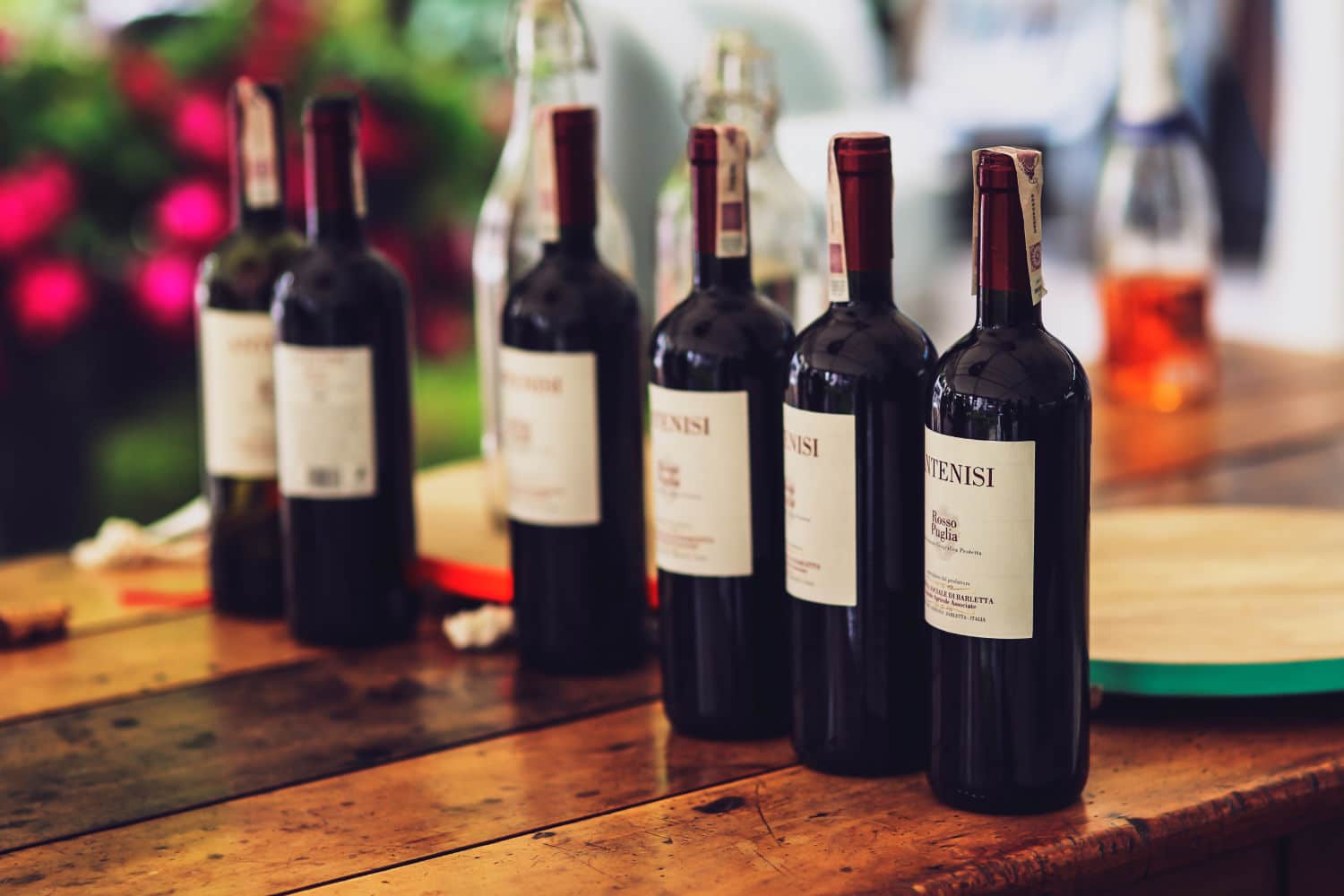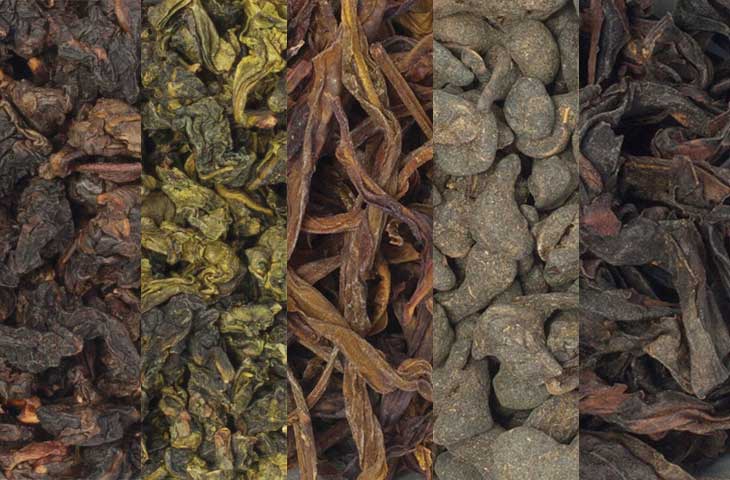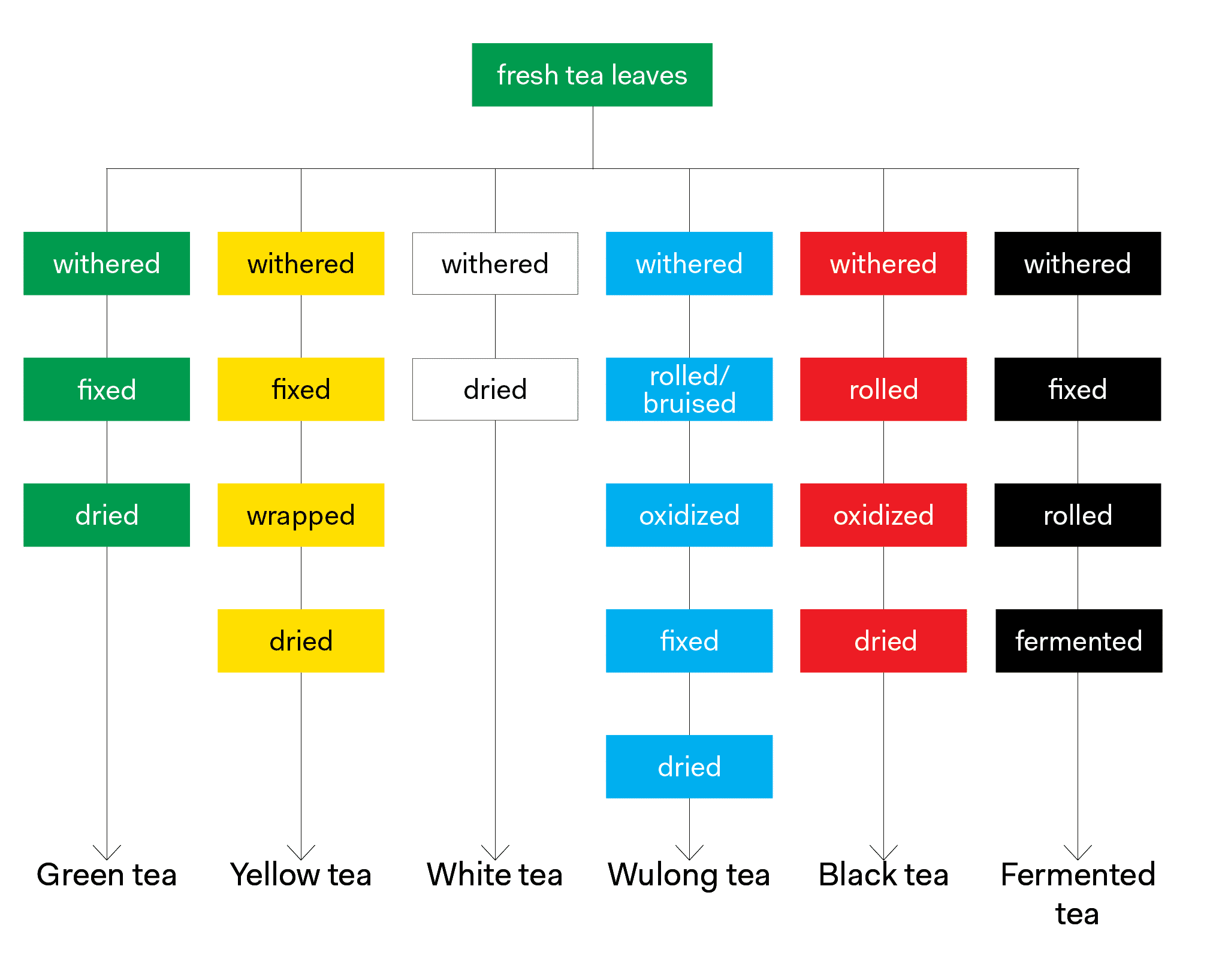A new year is upon us and the tea industry is rife with innovation, cheeky trends, and funky fads. We asked 11 tea folk from around the world what they see coming down the pike in 2018 — here’s what they had to say:

Ms. Yu Lu
Vice President of the China Chamber of Commerce of I&E of Foodstuffs, Native Produce and Animal By-Products (CFNA)
“I think in 2018 there will be steady growth in export volume and value of tea in China. Regarding the increase in export volume, there are a few key figures that I can share. According to Chinese Customs statistics, in 2017, Jan. to Nov. – we do not have the statistics of Dec. yet – China exported 323 thousand tons of tea, an increase of 8.2% over 2016. The total export volume of 2017 is expected to exceed 350 thousand tons. The Compound Annual Growth Rate of China’s tea export volume is 1.4% over the past ten years, from 2007 to 2016. Thus, it will keep growing steadily in 2018, based on these figures.
There are also other phenomena that will influence tea consumption and in turn affect trade, which I’ve noticed. Firstly, there is an increasing recognition of the health benefits of tea around the world led by health studies and creative tea products that highlight this message.
Next, more effort is being exerted by organizations, education institutions and companies in the tea industry all over the world portraying tea as an everyday drink– this is a cause shared by all people involved in the industry. It again focuses on the health and cultural values of tea, to give customers reasons to love tea and drink more tea.
Moreover, there is also an increase in all kinds of tea events in different countries, both producing and consuming countries, of different scale, regional, national and international, conferences, exhibitions, tea festivals, all kinds of activities. For example, the CFNA has two major tea conferences, Annual International Tea Conference (AITC) and International Tea Forum (ITF). The 2018 AITC is going to be held in March 17-19, in Yibin, Sichuan Province, China. The latter is held every two years in different tea producing regions in China, and we just concluded the 7th Forum in last September in Enshi, Hubei Province, China. Tea Master’s Cup as an international competition for tea professionals is also a very good example. These tea events encourage communication between suppliers & buyers and producers & consumers, different players of the industry, and inspire dialogue and learning between different tea cultures. The 2017 Tea Master’s Cup was held during our International Tea Forum. I think I can see from the event, it helps attract and involve a group of tea professionals, mostly young people from across the world, who are pioneering new ways of tea consumption, no matter the products, or the way people serve and drink tea, or how the tea culture is presented to the customers, etc. So, judging from all these phenomena and trends, tea consumption and trade is going to keep growing in 2018.
As for the export value of tea from China, I think it will also keep growing in 2018. Chinese Customs Statistics show that the export value for 2017, Jan. – Nov., increased by 7.8%, compared with the same period in 2016. It amounts to about 1.45 billion dollars in total. The Compound Annual Growth Rate of China’s tea export value is 10.4% over the past ten years, from 2007 to 2016. Aside from the statistics, there are also two trends I’d like to share about tea production and trade in China. The first has to do with the overall guiding government policies. In President Xi’s Report at the 19th National Congress of the CPC, it was predicted that China will finish the building of a moderately prosperous society by 2020. This means an increase in living standard and wages for Chinese, and it is expected to have an increase in cost of labor accordingly.
Secondly, the export of agricultural products faces a growing need and pressure of industrial transformation and upgrading. Especially for a product like tea, export as a kind of crude material cannot showcase its value, the rich heritage of such a long history and well-established and prosperous culture, or the power of origin. This need drives the industry to make innovations, investments and efforts, in order to sell high quality, value-added products, to introduce to the world Chinese specialty teas, to build up one image, to tell one story of Chinese tea, and tell the many stories about its 6 varieties of tea, green, white, yellow, oolong, black, dark (fully fermented Puer belongs to this variety), its growing, harvesting, processing, marketing and consumption, and to share with every consumer of Chinese tea all around the world our tea culture, and the values and philosophy related to it. I think this is about the right time that we make breakthroughs and make a difference, from the traditional industry and trade mode.
This of course is associated with price of tea in the market. Rise of costs will cause rise of price. Fortunately, we have wiser consumers who are willing to pay more, in order to buy products that have better flavor and better quality, and to be exposed to the origin of products, to hear the stories behind it. Therefore, I keep a very positive and enthusiastic attitude towards tea in 2018 and its future.”
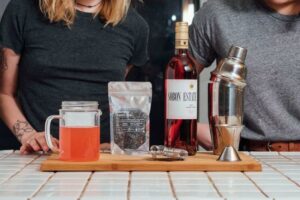
Bin Chen
Co-Founder of Tea People & Boba Guys
“Boba continues to grow and become more mainstream in 2018. Newer upstarts are tailoring their offerings to today’s tastes: away from powders and towards more natural ingredients. We’re seeing the boba industry starting to reach a newer level of maturity as derivatives like “cheese tea” and salt cremas start to spin off from the traditional boba milk tea concept. The tea of the moment is still matcha as matcha-only cafes continue to pop up in Los Angeles, San Francisco and New York. We’ve seen Boba Guys’ year over year sales shift more towards matcha and it shows no signs of slowing down.
Henrietta Lovell
Owner, Rare Tea Company
“We are opening our eyes to the environmental impact of what we consume and how it is packaged. January 2018 in the UK has seen an extremely successful campaign against plastic straws following a BBC documentary about their impact on our oceans and marine life.
Another recent revelation exposed the plastics in teabags, and not just those “silken” pyramids dangling on bleached strings. Paper teabags and the GM corn cellulose bags have also been found to contain non-biodegradable plastics.
Where older generations naively took packaging on trust, and for convenience, generations X and Y are looking deeper and asking questions. Do we really want to drink bleach and glue and the soluble chemicals used in their industrial composition? And will we continue to contribute to devastating environmental damage with our plastic waste?
The teapot is a piece of reusable technology that has been around for millennia. The teabag has only been popular since the 1970s. The one-use bag may have had its day, consigned with the plastic coffee pod to the rubbish dump of bad ideas.”
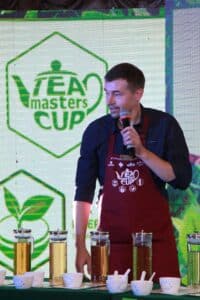
Denis Shumakov
Co-Founder of Tea School Studio, Chairman of the Advisory Board at the Tea Masters Cup, PR manager for Turquoise Tea
“Functional teas. Some teas have a very good chance to take a prominent place in the market of functional foods. That is, such foods, whose effect on a person is confirmed by independent research. For example, green Japanese Benifuuki tea, which has an antiallergic effect, can already be labeled Foods with Function Claims (FFC). The transition from abstract stories about the curative nature of tea in general (often having nothing to do with a specific drink) to informing consumers about the exact and verified by independent experts effect of a particular product will have a good impact on the tea market, giving it a new segment. We can’t expect a rapid development of this segment, though — the cost of entering the market of functional teas can be quite high and for small tea businesses, which are usually the first to develop new directions, this segment will most often be closed.

Nicole Martin
Owner, Tea For Me Please
“2018 will be the year of the educated tea consumer. Today’s tea enthusiasts know their stuff and are demanding more transparency than ever before. The days of the generic “Formosa Oolong” are behind us. Prospective buyers want to know exactly which mountain a tea is grown on, the cultivar used, and when it was harvested. Direct trade will be the rule rather than the exception as the demand grows for shorter, more tightly controlled supply chains.
I think we’ll also continue to see big changes in traditional tea industry dynamics. The combination of a global economy and social media gives tea drinkers unprecedented access to web-based retailers located close to origin and even producers themselves. I would never have believed that I would be purchasing tea directly from a farmer in the Wuyi mountains over Instagram but that is exactly what is happening.
Big box tea retailers struggled in 2017 but that doesn’t mean that there is lack of consumer interest. Brick and mortar shops that offer unique, immersive experiences will have an opportunity to grab a larger share of the market. Tea-infused cocktails, food pairing dinners, and other innovative programs will excite consumers and inspire them to take a second look at tea.”
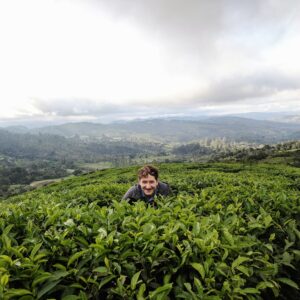
Jordan G. Hardin
Food & Beverage Director for Alfred Tea Room & Alfred Coffee, Editor in Chief at World of Tea
“2017 was a rollercoaster of a year in tea, and, for better or worse, we can see the industry changing. A few thoughts about what we’re likely to see this year:
* I think it’s clear that the old expansive retail model of selling tea isn’t what is desired anymore. Large chain brands are closing, or aren’t doing as well as expected. It’s a very subjective opinion, but customers want a tea experience, not a retail experience. They want to taste something, hold something, go somewhere with their friends. Tea as a space, an environment, a lifestyle is the future.
* The golden dream of bottled matcha is already upon us, as matcha has continued to expand into the Ready-to-Drink sector in various formats (anybody notice Drake investing?). By most accounts, RTD tea is still a growing market (not just counting kombucha either), which adds more pressure to the continual battle for shelf-space in the markets. I think we’ll begin to see some novel concoctions here and a hell of a lot of failed products. Hopefully, the ones that succeed aren’t too centered around tea as a health drink, but I think, rather sadly, that this is what sells on the broader US market.
* I’m already sourcing teas from new, different, and untraditional growing regions of the world. I think it’s very likely that as demand for tea and specifically, specialty tea, continues to grow we cannot rely on, nor will we be wholly satisfied with, the same teas from the same places. I’m talking high-quality specialty teas from less-sourced Asian countries like Thailand, Vietnam, Laos, and South Korea. Central and South American teas from Colombia, Ecuador, and Brazil. Even some highly specialty tea from Georgia, Germany, and the UK! And if I just say it enough, perhaps one day we’ll have substantial tea agriculture in the USA…
* Although it may not be as obvious to those who’ve worked in it for a long time, tea is attempting to undergo a cultural shift. I believe it’s earnestly trying to become hip and relevant to a younger crowd. But it may, in fact, be held back by a traditionalist viewpoint. I’m not sure anybody has quite captured what exactly the essence is of modern tea culture. How expansive is it? Is milk tea a new standard? Is iced tea a way forward? Is it about novelty? Is it all about the feeling it gives you, or the taste of tea, or the story behind it? Or all three in conjunction? I think we’re going to see a lot of brands attempting to answer this question in their own ways, with their own approaches. The question that remains is whether or not the message will truly be realized and we will begin a new chapter, or if it will become diluted and inevitably tethered to worn out ideas about what “tea” is. ”
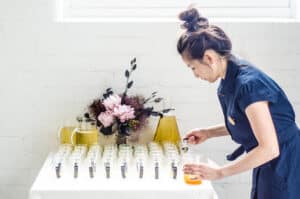
Cheryl Teo
Owner, Flag & Spear (Instagram)
“I’ve noticed tea showing up in unexpected places: as an accompaniment to a cheese board, a beverage pairing at fine dining, and even a sparkling cold brewed tea at a festival. In short, specialty tea has begun to encroach upon the traditional domain of craft food, beer, spirits, coffee, and wine.

Jozefien Muylle
2017 Winner of the Dutch Tea Championship and Owner of Be Your Tea
“Personally, I don’t spend much time spotting trends. I love the pure product – carefully produced tea. However, I believe it is wonderful to experiment, to let all my senses play with the many possibilities of tea together with other passionate people. Here’s what I see happening in the popular tea scene in Europe:
Taste Development
Flavor is winning. Modern trends and innovations in chai, matcha, and herbs such as turmeric continue to grow in Western Europe. I hope to see more plant-based, vegan milk alternatives for this trendy beverage too. Kombucha is also on the rise, it is consumed as a kind of soda but is, in fact, an age-old drink that originates from the fermentation of sweetened tea by yeast cultures. Besides Kombucha, the flavors and aromas of tea are extracted in new, interesting applications. There are all kinds of tea cocktails and mocktails, cold brews, and shock brews that are now taken very seriously. I think the people are starting to see that there can be a tea for every moment and season.
Specialty Tea
In this region of Europe, people grow up with the awareness of important wine regions such as Champagne, Bordeaux and Saint-Emilion and important grape varieties such as Pinot Noir and Chardonnay. This can hold true for tea and there is the possibility to put specific terroir and original teas on the market such as the Xihu Long Jing (= Original Long Jing produced on the West Lake) or traditionally produced puerh. There will be more conversation about specialty teas (as there has been in specialty coffee) produced in special and ideal climates (Darjeeling, Wuyi, or maybe Cornwall!), made distinctive by their full and perfect cup taste. There is also starting to be an affinity for the signature teas produced by a certain tea producer or tea master. Conscious consumers are sensitive for authentic stories.
Oolong Tea
Oolong tea is still fairly unknown to 99% of the population here, but together with an ever-growing group of tea sommeliers, foodies, bartenders, and chefs, oolong will reach a larger audience in 2018. Both the more lightly oxidized teas like an Anxi Tie Guan Yin or a Bao Zhong, as well as the dark oolongs such as the Da Hong Pao or a Dan Cong styles. They seduce and charm with their pleasant, natural sweetness. The more that restaurants and catering businesses can place oolong on their menu as a standard, the more one will discover this. In Western Europe the ‘bubble tea’ never really broke through, so let’s just go for the real product!
Food Pairing
Of course I’m going to go for food pairing! A good, comprehensive tea menu composed by a tea sommelier becomes a standard in the better restaurants, coffee bars, wine bars, etc. Depending on the offerings, there are suggestions for breakfast or lunch or there is an adapted tea menu for a series of courses. Of course, we will not stick to a standard hot cup of tea, but experiment with flavors, aromas, the temperature of the tea, the presentation, and using tea in food dishes. To help, a lot of inspiration can be found at Foodpairing.com, a company established in Bruges. Based on scientific research, they analyze ingredients at a molecular level and determine the compatibility. This creates beautiful pairings and stimulates chef, and more importantly, tea sommeliers to create new flavor combinations. I can easily see this being utilized in restaurants, cafes, and at large in the world of tea.”
Danielle Hochstetter
Specialty Tea Buyer (Linkedin)
“We should all count our lucky stars that millennials seem to love tea (as someone born in ’81, I count myself as 1/3 a millennial.) And for that reason, I am optimistic that the tea industry as a whole will continue to grow for the foreseeable future. A few trends I see are:
- Technology
Millennials and Gen Xers are comfortable with technology. So, even though Teforia is no more, I think it is not the last tea machine we will see. Teamosa might roll out something in 2018, the Chime is on the market, and that’s not even mentioning smart tea kettles. With the integration of Alexa, Google home, etc into more households, a KGM-type company might start looking at rolling out something targeted specifically at tea drinkers. - Cold Brew
I think we will continue to see interest in cold brewed tea, nitro tea, and sparkling tea. While I don’t see any of them “popping” this year, I think the momentum will continue to build, and more bottled options will be on the market. - Herbs
In flavored tea and tea blends, I see a need for premiumization of herbs. Consumers have shown that they are willing to pay more for higher quality tea. How about herbs? It’s not long before consumers will want more than just chamomile. In the same vein, I see the lines between where herbs go in portfolios will be blurred. For example, instead of a blend being primarily tea with a dash of herbs, you will see higher proportions of herbs that are really contributing to the flavor. Chai is an example of this, Fuze tea’s Mango Chamomile Green tea is another. I also see a trend of more classically savory herbs (like turmeric) into blends, such as basil, rosemary, and sage. - Subscriptions
This online trend works well with tea, and is a great gift. Lots of places are already doing subscription programs, but if you don’t have one, I suggest starting one.”
Lauren Pascault
Tea Consultant and Owner of Saveurs & Perspectives
“Although tea production went chronically bleak, 2017 has been a good year for tea: steadily growing consumption worldwide, lots of new products and more shops opening than closing. Much ado about nothing or something? If sector growth accounts for increasing demand, catering professionals and the general public seldom change their habits on behalf of novelty. Point is, market developments coming from leading brands address consumers of a finite product, not makers of shareable experiences. What we are looking for is where practices hail the versatility of tea.
Tea is moving out of the deli aisle and into the lifestyle department, thanks to social media: visually enticing Instagram pictures make one look good, as tea tells of health concerns as much as an epicurean life. Tea piggybacks trends such as yoga, home decor, zero waste, conscious eating… Interests that drive youth.
I think the future of tea stands with the newest working generation: the tea masters and entrepreneurs of 2018. Aged 25-35 y/o, their ability to change things is in full swing: new technology, collaborative economy and grants for innovative, green or social projects are on their side to help them overturn tea habits and serve business best practices. I expect:
- Continued collaboration between retail, catering and other trades to make better tea happen out of the home and shorten the supply chain, especially as more and more young professionals dedicate themselves to food-related jobs.
- More consumer-oriented tea festivals, especially in Europe where tea has a hard time being acknowledged as a part of food culture.
- The rise of serious tea education available to all, beyond the vested interests of industry players.
- A brick&click tea shop based on sensory profiling, or a transparent app showing responsible tea shops around the world and who they source from.
- Growing interest in local and foreign herbs to complete food and drink experiments with tea.
The challenge will be to move the heavy tea-drinking 35-65 y/o group: most of them still regard tea as a mere beverage more than a means of expression and crave the exotic storytelling more than transparency. But if 2018 lives up to my expectations, the tea market will be a little more trustworthy by the time the year-end summary is published.”

Alexis Siemons
Tea Consultant, Owner Teaspoons & Petals
“As we peer into 2018, I strongly believe that the future of tea is bright. In 2017 food media began sharing stories about the foundation of brewing a cup of tea (water temp and steep time) and directing us to cafes and companies for details. That being said, I think that 2018 will be steeped (pun intended) with a deep dive into education. Consumers will want to know how to prepare the tea, where it is from and even what to pair it with. Similar to the matcha craze, consumers will want to try the beverage in a modern format (or even prepared for them in cafe) and then ensure that they have the proper teaware tools (whisk, bowl, etc) to make it at home. Companies should be prepared to share this content and tools with consumers.
Outside of the traditional hot steep, you will continue to see the growth of cold brew tea not just on café menus but in the RTD section as well. As the demand for low abv beverages is on the rise, mixologists and restaurants will most likely turn to tea infusions to add depth and to mimic certain alcoholic flavors (like how grain, deep caramel, spiced flavors of some bourbons can be replicated with some darker, aged oolong teas). While earl grey tea has been the constant cocktail companion, I believe that mixologists will seek out inherent flavors in pure specialty tea.
Speaking of the restaurant world, I believe that restaurants will not only improve their tea programs (offering more than a dusty box of chamomile) but that some more creative, committed establishments will build a tea program that pairs well with their cuisine (and maybe even develop a tea pairing menu component like Atera in New York.) Restaurants may also begin to offer more tea infused dishes and treats as less of a novelty item when they begin to understand that tea can be treated like extra spices that have been there all along.
The wellness industry that helped bring matcha to new heights will continue to grow functional herbs and wellness beverages (think adaptogenic reishi mushroom lattes, etc). The wellness industry help drive the botanical and tea front from a holistic perspective. The earthier wellness oriented herbal flavors (think turmeric, mushroom) may help drive traffic towards pure teas with earthier, darker flavors like roasted green teas (hojicha) and darker oolong teas. With wellness in mind, you will also begin to see cannabis grow in both loose, bagged and RTD tea blends.”
*Featured Photo Credit: Flag & Spear and Isaac McNicol Photography



